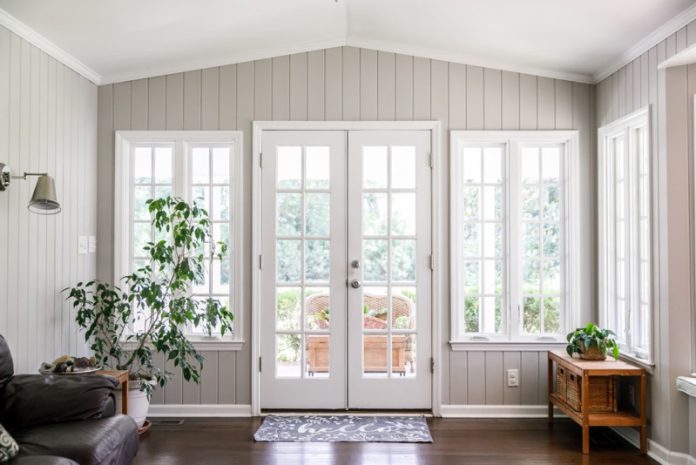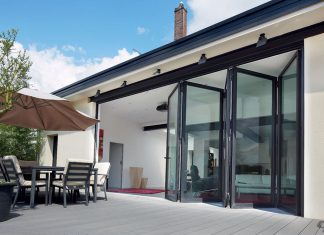There are a few different types of windows that you can install in your home. Here is a breakdown of the different types of windows and their practical uses:
1. Single-Pane Windows
Single-pane windows are the most basic type of window. They are made up of one pane of glass and are typically used in older homes. While single-pane windows offer some insulation, they do not provide much thermal protection and can be drafty.
2. Double-Pane Windows
Double-pane windows are more efficient than single-pane windows. They consist of two panes of glass that are separated by a gas or air fill. This helps to prevent heat loss in the winter and heat gain in the summer. They also provide better insulation than single-pane windows.
3. Awning Windows
Awning windows are hinged on the top and open like an awning. These types of windows can be installed at ground level, high up on a wall, or anywhere in between. They can also swing to either side for ease of cleaning from inside the house.
Awning windows contain a screen that keeps insects out and a window covering that keeps heat in during colder months and out during warmer months. The window covering opens downward, providing ventilation while keeping rain from entering the home when it is closed.
4. Casement Windows
Casement windows are hinged along one edge and pushed outward to open. Casement windows have a crank or handle for ease of opening. These types of windows are strong, efficient, and sturdy.
They also open fully to allow a breeze inside the home when opened. The window stays in a position that is closed from moving air but can be pushed open from the inside for ventilation if desired.
5. Double-Hung Windows
Double-hung windows are hinged on both sides and slide up and down to open and close. This type of window typically has one operable sash that slides up and down while the other remains stationary.
Double-hung windows offer optimal protection, insulation, and airflow – all while keeping the home’s interior looking sleek and stylish with their unobtrusive design.
- Tilt & Turn Windows: Tilt and turn windows are a type of double-hung window with a tilting action for easy cleaning. The window can be opened inwards or outwards, depending on your needs.
This window is a great choice if you want the option to open the window from the inside or outside.
So, which type of window is right for you? It depends on your needs and what you are looking for in a window. If you are looking for an energy-efficient window that will keep your home insulated, then a double-pane or tilt & turn window may be right for you.
If you are looking for a stylish and unobtrusive window, then a double-hung window may be the best choice.
How Window Installation Helps You In The Long Run
Window replacement can be a big expense, but it is worth it in the long run. The right window can help to improve the energy efficiency of your home, save you money on your energy bills and make your home more comfortable.
Window installation costs vary depending on the type of window you choose, the size of the window, and the complexity of the installation. However, most windows fall within the range of $200 to $1,000 per window.
So, what are you waiting for? Invest in some new windows for your home and start enjoying all the benefits they have to offer!
The Process Behind Window Installation
But do you have to learn how to install a replacement window? If you have no experience or expertise in doing the work, the best solution is to hire professionals.
Window installation may seem like a daunting task, but with the right tools and instructions, it can be a relatively easy process. The first step is to remove the old window. This may require removing the trim or siding around the window.
Once the old window is removed, the new window can be installed. The new window should be positioned in the opening so that it is level and plumb.
The shims should then be used to adjust the position of the window so that it is perfectly level and plumb. The screws should then be used to attach the window to the framing.
How Window Replacement Works
Window replacement is a similar process to window installation. The first step is to remove the old window. This may require removing the trim or siding around the window. Once the old window is removed, it should be inspected to determine if replacement parts are needed.
Once this has been determined, new wooden stop blocks or other framing components may need to be installed before installing the new window. The footprint of the old window should first be traced onto a piece of wood called a sill pan which will help direct water away from the wall and into gutters that lead to downspouts.
A layer of underlayment may then be glued or stapled onto the sill pan. This layer will protect against drafts and make installing weatherstripping much easier later on in the process.
After this comes the installation of an exterior plywood panel trimmed with either aluminum wrap (in climates that don’t see winter weather) or vinyl (in colder climates).
This panel conceals the window’s screws and provides a finished exterior look. The window is then set into the opening, and shims are used to adjust it so that it is level and plumb. Finally, the window is screwed in place.
Different Window Replacement Types You Should Know Of
Is there a need for you to know how to measure window for replacement? In general, no since you will be leaving that task to the window installation company that you hire.
There are many types of replacement windows, each with its own set of benefits and drawbacks. The most common types are listed below.
1. Window Replacement Type: Vinyl Windows
Benefits: Vinyl windows are affordable and come in a variety of styles. They are also very low-maintenance and easy to clean.
Drawbacks: Vinyl windows can be less energy-efficient than other window types and may not fit well in historical homes.
2. Window Replacement Type: Wood Windows
Benefits: Wood windows offer a classic look and are very energy-efficient. They can also be repaired or refinished if they become damaged.
Drawbacks: Wood windows require more maintenance than other window types and can be expensive to install.
3. Window Replacement Type: Fiberglass Windows
Benefits: Fiberglass windows are both energy-efficient and durable. They also come in a variety of styles to match any home.
Drawbacks: Fiberglass windows can be expensive to install and may not fit well in historical homes.
The type of window replacement you choose will depend on your individual needs and budget. Contact a window installation company for more information on the different types of replacement windows available.
Determining the Costs of Windows Installation
Now the question is how much does window installation cost? Can you afford it? How much should you budget for it?
Window installation costs can vary depending on the size and type of window, as well as the complexity of the installation. However, most window installation companies offer free quotes so you can get an accurate estimate before deciding whether or not to proceed.
Replacing your windows is a big decision, but it can also be a big savings in the long run. Installing energy-efficient windows can help you save on your energy bills, and new windows can also improve the look and value of your home.
Contact a window installation company today to learn more about the different types of replacement windows available and to get a free quote.














